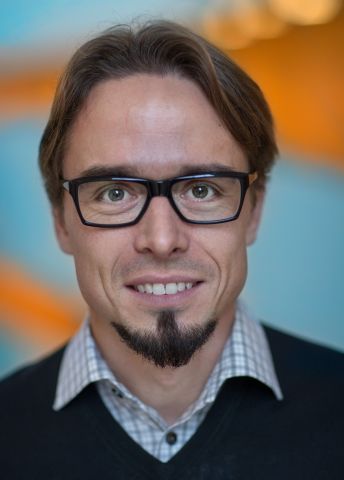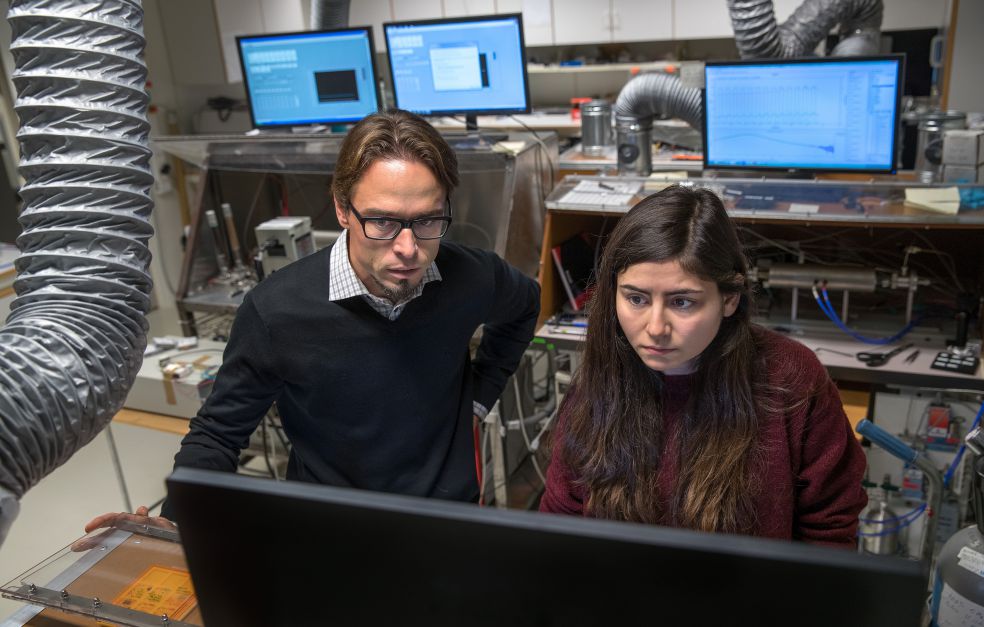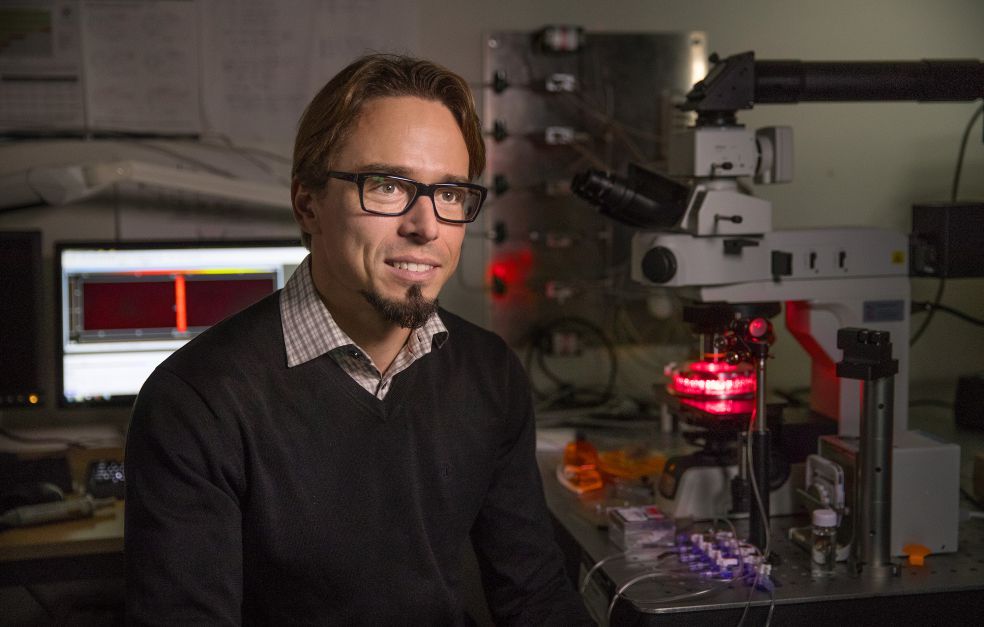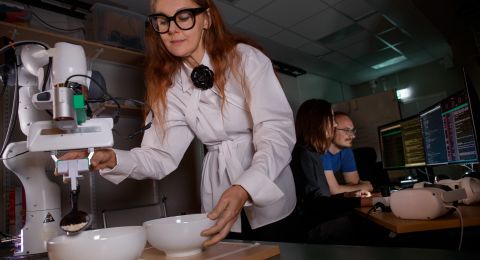A rapidly growing research field that is still essentially based on a single chemical element is not reasonable. Or so Christoph Langhammer thinks. As a Wallenberg Academy Fellow, he will be expanding the field of nanoplasmonics by adding new elements and alloys. The result may be better sensors and catalysts.
Christoph Langhammer
Professor of Chemical Physics
Wallenberg Academy Fellow 2016
Institution:
Chalmers University of Technology
Research field:
Nanotechnology, nanoplasmonics, materials science
Researchers in nanoplasmonics exploit the impact of light on metal nanoparticles. The light causes electrons in the metal to oscillate – a phenomenon called plasmon resonance. This can be used in sensors and catalysts, for example. But although the field has grown rapidly in a short period of time, one thing remains virtually unchanged: the metal.
“Over 90 percent of current applications are based on nanoparticles of pure gold. It has excellent properties for plasmonics. But having an entire research field develop solely on that basis, when there are so many other elements in the periodic table – it’s kind of crazy. There’s so much we must be missing,” Langhammer exclaims.
Based at Chalmers University of Technology at the Department of Physics, he and his colleagues are working with nanoparticles of other metals, and have also developed a new method for making and using alloy nanoparticles.
“It’s really hard to build nanoparticles from alloys with the precision we have, and no-one has done it before. So it was a good platform for more R & D,” Langhammer explains.
Now he wants to develop and test new materials for use in nanoplasmonics.
Nanoparticles in hydrogen gas sensors of the future
The method of manufacturing alloys at the nanoscale was developed in an experimental attempt to create hydrogen gas sensors. This required nanoparticles of an alloy of gold and palladium. Palladium is good at absorbing hydrogen, and the hydrogen atoms that penetrate the metal slightly alter the electronic structure of the palladium nanoparticle, changing the plasmon resonance in the process. The difference is a signal that indicates that hydrogen is present. But to build sensors of this kind it was necessary to be able to make nanoparticles from a palladium-gold alloy. Now that the Gothenburg research team has succeeded, they are well on their way to creating the world’s fastest hydrogen gas sensors.
Among other things, hydrogen gas sensors are used to detect leaks or for process control in the chemicals industry and at refineries. But Langhammer sees the greatest need to be in the future. He thinks it is only a question of time before we begin to see hydrogen used on a large scale as a fuel and for energy storage. It is clean, water being the only by-product when combusted or electrochemically converted into electricity, but it does have one disadvantage: it is highly explosive when mixed with air. Even now, some 30 sensors are needed in an automobile running on hydrogen gas. According to Langhammer, these sensors are far too expensive to allow widespread use of hydrogen gas technology. They need to be small, quick and cheap.
“Industry is now starting to formulate requirements for sensors that nobody is yet able to meet. But our nanoparticle-based technology brings us very close.”
Catalysis is another potential application for nanoplasmonics. A catalyst is something that triggers or increases the rate of a chemical reaction. Heat is often required, but there are some indications that the oscillation of electrons in plasmon resonances may offer new ways of controlling or speeding up a chemical reaction. If so, visible light could be used to intensify catalytic reactions using plasmon resonance.
“It’s more of a high-risk project. We know a lot less about this than we do about hydrogen gas sensors. But we’ll be examining the concept of mixed-material nanoparticles to see if we can achieve better catalysts in combination with light. Depending on the reaction we want to achieve, we can pick and choose from the periodical table of the elements…”
“As a Wallenberg Academy Fellow you have a fair amount of freedom. I can do more interesting things – take greater risks. It’s a huge luxury. And another unique aspect is the chance to have the funding extended to up to ten years. We researchers wrestle constantly with the question of maintaining what we have built up, so a grant of this kind provides real security.”
Attracted not by Sweden – but by the research environment
Langhammer was born and raised in Switzerland. He was interested in most subjects at school, especially languages. But he chose to study science and technology at university, specializing in materials science. A master thesis position came up abroad, at Chalmers University of Technology in Gothenburg.
“I wasn’t keen at all on moving to Sweden – it seemed cold and wet. But the department at Chalmers offered a really exciting research environment.”
After his master’s thesis position ended, he began work on his doctorate at Chalmers, where he met his future wife. They joined forces with their supervisors and started a company based on their research. His wife remains in charge of the technology side at the company. Langhammer himself retains a minor role as a research consultant.
“I would happily have stayed on full-time at the company. But I grew into my role as a research leader in the academic world, and wanted to continue.”
And Langhammer feels this way even though his work as an academic researcher has often been highly demanding. He lists the qualities required: you need to be a good teacher, supervisor, manager, and administrator, and also ensure the research is put to use – all at the same time.
“At a time of life when thoughts turn to a family and children, I still had only a temporary position. You have to write funding applications, and nobody tells you how to do it. But when you get into it, it’s more and more fun…”
Text Lisa Kirsebom
Translation Maxwell Arding
Photo Magnus Bergström






